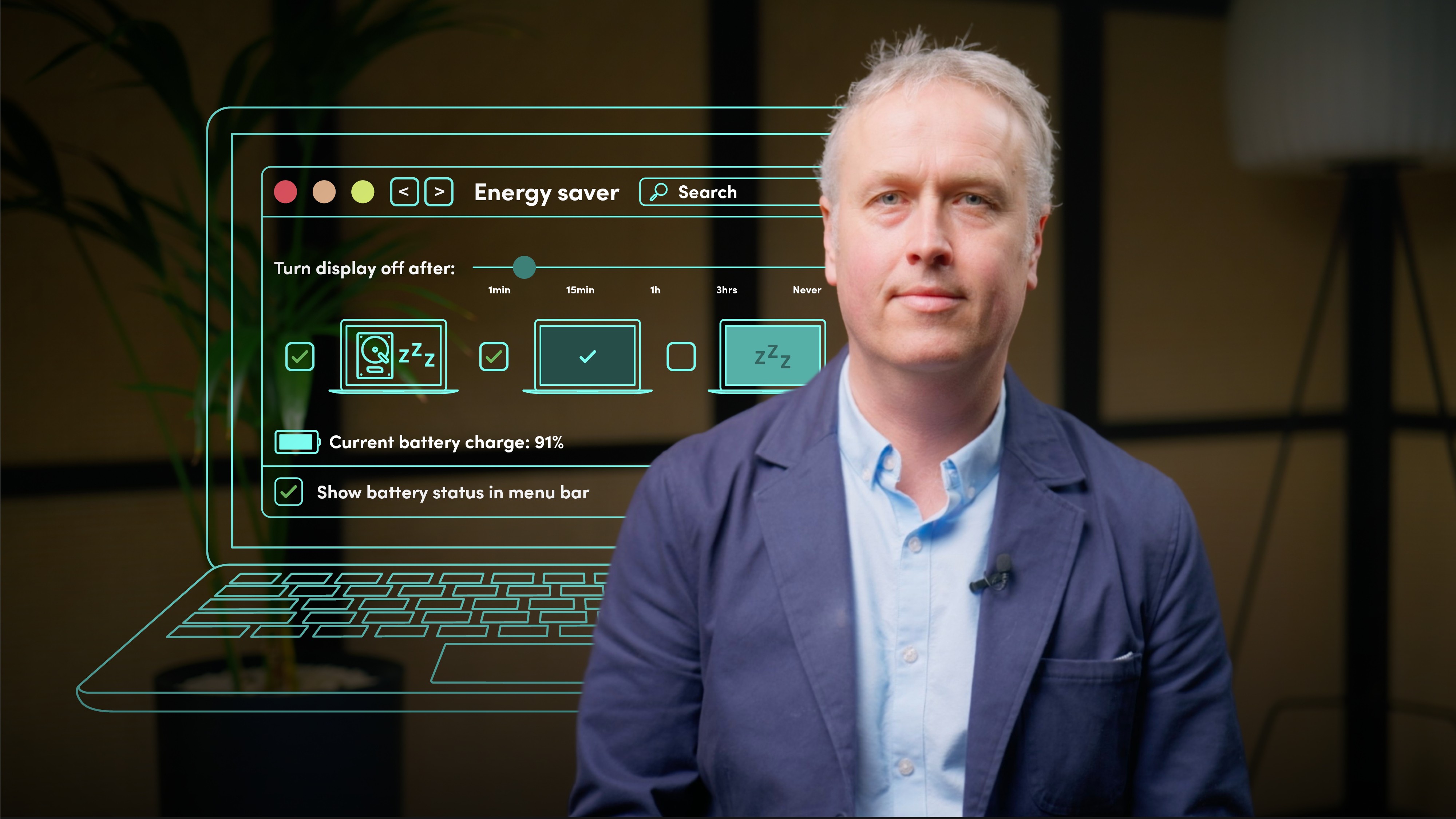
Reducing Emissions from Software Use

David Harrop
30 years: Climate Change and Environment Director
Over 4 billion people are using the internet. Join David Harrop as he explores how we can reduce emissions from software use.
Over 4 billion people are using the internet. Join David Harrop as he explores how we can reduce emissions from software use.
Subscribe to watch
Access this and all of the content on our platform by signing up for a 7-day free trial.

Reducing Emissions from Software Use
12 mins 36 secs
Key learning objectives:
Outline how to choose sustainable software
Identify factors to consider when buying a device
Outline ways to reduce carbon impact of a device
Understand the benefits of using sustainable model clauses
Overview:
There are many ways to reduce carbon impact as an end user. Firstly, check the sustainable credentials of both the software provider and the specific software. You can also take factors into consideration when buying a device - do you need it, does it have an energy rating and can the lifetime use be extended? Lastly, you can reduce the carbon impact of a device by unplugging when not in use, powering down if it must remain plugged in and reducing the brightness of your monitors.
Subscribe to watch
Access this and all of the content on our platform by signing up for a 7-day free trial.
- Have they set a net zero target and is it aligned with a 1.5c future? Has this been validated and approved by the Science Based Target initiative (SBTi)?
- Perhaps more importantly, do they have a near-term emission reduction target?
- Do these targets cover scope 1, 2 and 3 emissions?
- Do they publish their carbon footprint, for example through the Carbon Disclosure Project (CDP)?
- Has the footprint been independently verified?
- Do they have a published climate transition plan and how is this performing?
- Can the software provider provide a product carbon footprint, showing the greenhouse gas impacts throughout the product’s lifecycle?
- Consider the number of devices that you buy and actually use. The more equipment we buy and use, the higher the carbon impact. A workstation with a laptop and 2 monitors will have more than double the impact of a single laptop.
- Consider the energy efficiency of the device for example, does it have an energy star rating showing the device operates energy efficiently?
- Consider whether the lifespan of the device can be extended. You can utilise simple solutions to extend the lifetime of the device such as battery replacement or screen replacement on phones. You can also use trade-in programmes if you want to buy the latest device or see if the device can be recycled with the manufacturer.
- Avoid standby and fully shut your devices down at the plug
- Activate the power saving settings on computers and laptops
- Set devices you own to automatically power down
- Reduce the brightness of your monitors, or turn on dark mode
- Check what type of energy you are buying and whether you can purchase renewable energy
- These requirements can be tailored to a software provider’s own net zero journey
- They can be actioned today to start making greenhouse gas reductions immediately
Subscribe to watch
Access this and all of the content on our platform by signing up for a 7-day free trial.

David Harrop
There are no available Videos from "David Harrop"





























